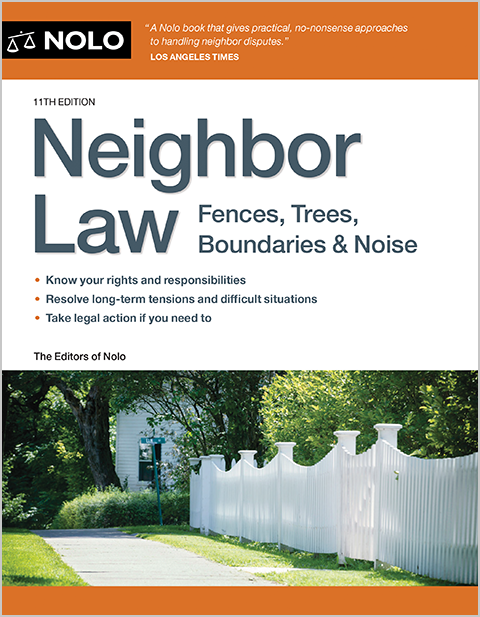Requirements placed upon New Mexico home sellers with regard to disclosure of adverse material facts come both from state statutes and custom.
As you try to sell a piece of real estate in New Mexico, you face the challenge of convincing buyers of its value: how beautiful the home and land are, how well-made the structure is, and so on. Yet New Mexico, like most states, requires that home sellers disclose certain flaws and facts about the home and property's condition to potential buyers. This can add to your marketing challenge. What must you disclose about your home in the Land of Enchantment, by when, and how might this ultimately affect your sale?
- Seller's Disclosure Laws in New Mexico for Home Sales
- Broker's Disclosure Laws in New Mexico for Home Sales
- What Information Is Deliberately Omitted From New Mexico's Disclosures?
- Federal Law Also Makes Sellers Responsibility for Disclosing Lead-Based Paint Hazards
- Next Steps If You Have Questions About Filling Out New Mexico Residential Property Disclosures
Seller's Disclosure Laws in New Mexico for Home Sales
The legal requirements placed upon home sellers with regard to disclosures are laid out in New Mexico Statutes § 47-13 et seq., also known as the Real Estate Disclosure Act. New Mexico is unique in that its statutory disclosure requirements focus almost exclusively on tax issues.
Tax Disclosure Requirement in New Mexico
According to New Mexico Statutes § 47-13-4, before you can accept a buyer's offer to purchase your property, you must request from the county assessor the estimated amount of property tax levy with respect to the property and specify the listed price as the value of the property to be used in the estimate, and then give a copy of the assessor's response to the prospective buyer.
The statute also includes extensive discussion of how the county assessor (sometimes referred to as the county clerk) must calculate the property taxes. Obviously, these requirements are intended to ensure that the buyer is not surprised by the amount of taxes that will be owed, after closing.
Disclosure Requirement Created Within New Mexico Property Purchase Form
Despite the lack of a broad seller disclosure requirement within New Mexico law, the New Mexico Association of Realtors has effectively created such a requirement by including it within its standard purchase agreement for residential resales. The agreement includes this language:
SELLER'S DUTY TO DISCLOSE. SELLER'S DUTY TO DISCLOSE. Seller shall disclose to Buyer any Adverse Material Facts known to them about the Property and shall have an ongoing obligation up until and including the Settlement Signing Date to disclose any newly discovered Adverse Material Facts. ... Notwithstanding the foregoing, Seller shall have NO obligation to inspect the Property for the Buyer's benefit or to repair, correct or otherwise cure known Adverse Material Facts that are disclosed to Buyer or unknown Adverse Material Facts that are discovered by Buyer's inspections.
Because this form is used for most property transactions, buyers will expect to receive written property disclosures as a matter of custom. The New Mexico Association of Realtors has created an extensive Adverse Material Facts Disclosure Statement for use by sellers of real estate. Check with your real estate agent or attorney for a copy of the latest version, or to see whether they have a preferred form.
Within the form, property sellers are asked to disclose to buyers all material defects in their property about which they have actual knowledge and that would affect the property's value or desirability. In plain English, this means that you should tell the buyer, in writing, about any significant problems with the property, such as a busted heating pump, a missing window, or a broken pipe.
The disclosure form also asks whether the seller actually knows about or is aware of a series of legal as well as physical problems with the property. For example, it asks whether there been smoke or hail damage, whether any outstanding liens have been placed on the property, and whether any easements would affect the buyer's rights. It asks whether there has been damage to the exterior of the home, or any water pressure or other plumbing problems, or any leaks in the swimming pool or elsewhere.
Remember, if you are not aware of issues in these areas of the home, you can answer "no." There's no need to commission professional inspections or conduct tests.
Broker's Disclosure Laws in New Mexico for Home Sales
Interestingly, your real estate broker will be expected, as a condition of holding a professional license, to tell prospective buyers about any adverse material facts the broker actually knows about the property or the transaction. New Mexico Statutes § 16.61.19. Since brokers are experienced at looking at properties, and will be in close communication with you as you prepare your home for sale, this basically means that if there was information you were hoping to conceal, it might come out anyway.
What Information Is Deliberately Omitted From New Mexico's Disclosures?
Certain pieces of information are explicitly excluded from disclosure (and thus not mentioned on the standard disclosure form). N.M. Statutes § 47-13-2 notes that a seller won't be liable for failing to disclose the fact or suspicion that the property has been the site of a natural death, a homicide, a suicide, an assault, a sexual assault, or any other crime punishable as a felony.
Moreover, home sellers in New Mexico have no duty to disclose whether the property was owned or occupied by someone who was exposed to, infected with, or suspected to be infected with the human immunodeficiency virus (HIV).
The purpose of these carveouts is to prevent the real estate market from being clouded by irrelevant pieces of information. Still, you should realize that homebuyers might ask these questions. If news stories about your property can be found online or from other public sources, for example concerning a murder committed there, you might want to be prepared with an answer, or to decline to answer. (Never lie.)
Also keep in mind that if you are not honest and open in your disclosure statement, there's a good chance that the buyer might find out about the problems upon hiring a home inspector. If you appear to have hidden the problem, this will lead to a serious trust issue, which could undermine the sale. Moreover, you could face future legal liability. For example, imagine that on your disclosure form, you claim that there is no issue with your home's electric system. After closing, the buyer tries to turn on the lights and half of them fail to work. Any claim that you "didn't know" about the broken electrical system would be, at best, difficult to believe. This creates a risk that the buyer will sue you for breach of contract or fraud.
Fraud is often defined as an intentional misrepresentation of a material fact made with knowledge of its falsity, and with the specific purpose of inducing another person to act, resulting in injury to that person. Your misrepresentation—that you did not know about an obvious defect—could expose you to liability. At a minimum, it could trap you in costly and time-consuming litigation when you would like thoughts of your old home to be behind you.
Federal Law Also Makes Sellers Responsibility for Disclosing Lead-Based Paint Hazards
The federal Residential Lead Based Paint Hazard Reduction Act (42 U.S. Code § 4852d), commonly called Title X), tries to reduce the risk of lead poisoning in housing. If your home was constructed before 1978, it is likely to contain some lead, whether in the paint or pipes.
You will therefore need to take the steps described in Seller Responsibility to Disclose Lead-Based Paint Hazards.
Next Steps If You Have Questions About Filling Out New Mexico Residential Property Disclosures
You real estate agent can be an excellent resource in helping you fill out the form in a way that is truthful yet doesn't alarm buyers. For major or high-dollar concerns that your agent isn't comfortable helping with, consult a real estate attorney.
Talk to a Lawyer
Need a lawyer? Start here.
How it Works
- Briefly tell us about your case
- Provide your contact information
- Choose attorneys to contact you
- Seller's Disclosure Laws in New Mexico for Home Sales
- Broker's Disclosure Laws in New Mexico for Home Sales
- What Information Is Deliberately Omitted From New Mexico's Disclosures?
- Federal Law Also Makes Sellers Responsibility for Disclosing Lead-Based Paint Hazards
- Next Steps If You Have Questions About Filling Out New Mexico Residential Property Disclosures
- Briefly tell us about your case
- Provide your contact information
- Choose attorneys to contact you


